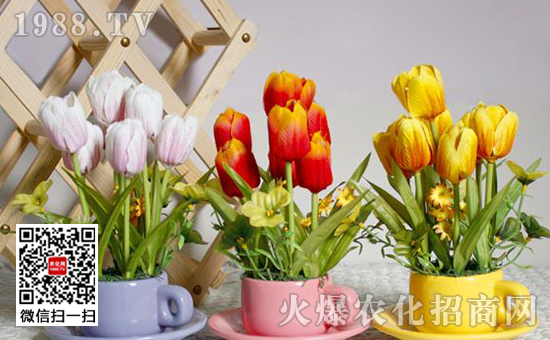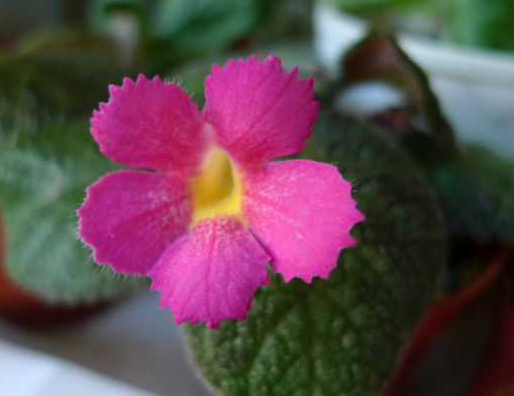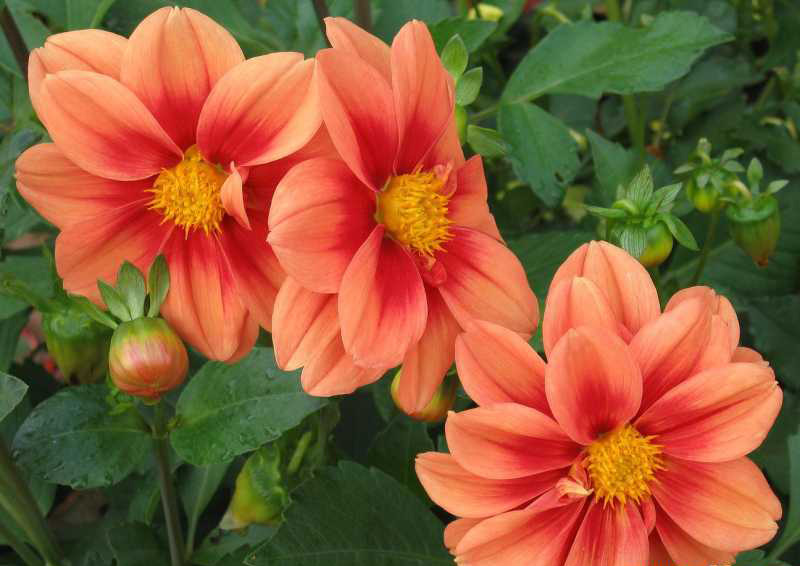How to cultivate potted tulips
Tulip belongs to bulbous flowers planted in autumn, and it is suitable for potted plants from late September to early and middle October. Dwarf varieties and deep pot should be selected in pot culture to facilitate root development. The basin soil can be mixed with 7 parts of rotten leaf soil, 2 parts of sandy soil and 1 part of rotten stable fertilizer soil. A flowerpot with a diameter of 20 cm □ can plant 3 bulbs in each pot. Water after planting for one time. Put the basin in the sunny place outside, and spray water when the soil is dry. But do not need too much water spray, in case the basin soil is too wet, causing the bulb to rot. Move it into the cold room before freezing, keep the room temperature above 0 degrees Celsius, and sprout in early spring from February to March. After budding, it was gradually moved to the outdoor sun, the thin pancake fertilizer was applied every 10 days or so, and the available phosphorus and potassium fertilizer was applied twice from bud gestation to flowering. Keep the pot soil moist during the growth period, and then blossom on time.

First, choose the right variety and the right seed ball
(1) choose dwarf varieties
Not all tulips are suitable for potted plants. In fact, it is best to choose genotypic dwarf varieties or wild tulip varieties because of their short stems and compact leaves. Dwarfing potted tulip plants can also be achieved by reducing the length of cold treatment or by using growth hormones such as dwarf hormone.
(2) choose the correct seed size.
Tulip potted plants need high quality and large size bulbs. This is because even if only one seed ball in the pot does not germinate, it will affect the cultivation effect of the whole pot and make it an inferior product.
(3) the plan from planting bulb treatment to flowering stage
After the bulbs are harvested, the bulbs of tulips need to be treated at high temperature and then at a low temperature in order to make them blossom in early spring. Whether it is tulip potted flower production or cut flower production, to blossom ahead of time, these requirements must be met. It can be done by temperature treatment. In the stage of heat treatment after harvest, leaves, pedicels and flowers (in the above order) are formed in the bulb. Once the pistil is formed, the flower has been formed, which means that the G stage has been reached. After the G stage is reached, after a short intermediate temperature treatment, the bulbs that want to bloom in the early stage can be cold treated. For late flowering bulbs, the stage of heat treatment must be prolonged to delay the start of cold treatment.
Second, control the growth of potted tulips by correct cold treatment.
(1) pay attention to temperature
For wild-type or other dwarf varieties, the preparation for potted flower production is actually the same as cut flower production. But be careful not to make the balls cold for too long, which will make them grow too tall. For the treatment of early flowering bulbs, it is best to cool the dry bulbs for a certain period of time, and then complete the cold treatment two months before the bulbs are ready to be moved into the greenhouse.
The unrooted bulbs can be put on the pot directly to complete all their cold treatment. Too many roots can even be controlled by low temperature after rooting. When the cultivation is promoted in the early stage, insufficient cold treatment time can sometimes lead to blind flowers.
For tulips that are required to bloom at Christmas, special varieties should be used and special treatment should be carried out.
(2) the treatment after the seed ball arrives at the goods
It is recommended to use the seed ball that has been dealt with. In this way, there is no need for storage and the danger caused by storage.
When the goods arrive, the balls cannot be planted or processed, and they need to be stored in dry, low-temperature and moderately ventilated buildings. The best way is to store partially cold-treated bulbs at a low temperature of 5 ℃ or 9 ℃. The uncold-treated bulbs are stored at 17 ℃ and the environment requires dry and good ventilation until the bulbs are planted or placed in a cold storage and the required cold treatment is completed at 9 ℃, 5 ℃ or 2 ℃.
Third, use fresh basin soil and cover it.
Prepare suitable basin soil with a good ratio of moisture to air (up to 80% moisture and at least 10% air content); pH6 to 7% EC
- Prev

What should be paid attention to in the maintenance of Xi Yinhua?
Xi Yinhua is famous for its red paulownia grass. Flowers are solitary in the axils of leaves, scarlet, and bloom in summer. Common varieties are emerald queen, leaves are dark green, midrib silver-white; copper-green shade flowers, leaves are copper-green, leaf edges are light red; chocolate flowers, silver-white main veins, silver-light shade flowers, flowers and leaves, etc.
- Next

How to cultivate Xiaoli flower
Xiaoli is a perennial herb of Compositae, which belongs to the same genus as Dahlia. The shape is similar to that of dahlia, except that the plant is short, with many branches and many flower heads. Most of them are single small flowers, each plant can have several flowers and open at the same time.
Related
- Fuxing push coffee new agricultural production and marketing class: lack of small-scale processing plants
- Jujube rice field leisure farm deep ploughing Yilan for five years to create a space for organic food and play
- Nongyu Farm-A trial of organic papaya for brave women with advanced technology
- Four points for attention in the prevention and control of diseases and insect pests of edible fungi
- How to add nutrient solution to Edible Fungi
- Is there any good way to control edible fungus mites?
- Open Inoculation Technology of Edible Fungi
- Is there any clever way to use fertilizer for edible fungus in winter?
- What agents are used to kill the pathogens of edible fungi in the mushroom shed?
- Rapid drying of Edible Fungi

